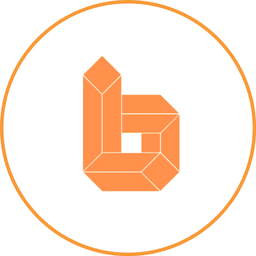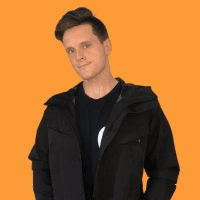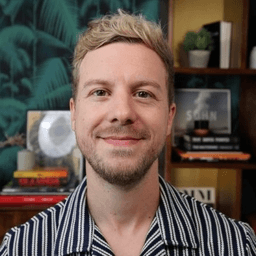How Two Two Serial Entrepreneurs Built and Sold Bubble 6 Figures


Business Description
Table of Contents
Navigate through the case study sections
Executive Summary
Case Study Content
Turning Frustration into a 6-Figure No-Code Education Empire
When Lachlan Kirkwood realized he had more app ideas than coding skill, he didn’t let that block the path. Instead, he gravitated to Bubble.io, the no-code platform making waves for makers who can’t (or just plain won’t) get knee deep in actual code. After 8 online business failures (yep, really), a tweet from a curious Japanese follower sparked a new idea: Why not teach this stuff to those in his shoes? That simple outreach led to Lachlan’s first online course, and what would become Building with Bubble. He started with Udemy, because distribution is everything for solopreneurs, but quickly learned the platform’s high commissions left a lot of meat on the bone.
Building an Audience Without Burning Cash
Paid ads? They tanked. Instead, Lachlan began posting practical Bubble.io walkthroughs and free content on his standalone website, (yes, built with Bubble). His audience grew not by shouting louder, but by teaching better, building an email list and a content moat for sustainable organic growth. People who watched his videos saw his approach in action, so when they were ready to buy, trust was already high.
How One-Time Payments Became a Strength
Subscription businesses always sound lucrative, till you’re dealing with churn and customers who vanish after a month. After initial experiments, Lachlan’s courses adopted a one-time payment model. It fit the moment: most users were motivated to learn Bubble NOW (maybe on a project, maybe building their startup idea), so the offer of lifetime access with clear value made sense. Pricing climbed gradually as the course library expanded, maintaining both affordability and margin. No need to chase monthly renewals. Customers paid at a point of maximum urgency.
From Side Hustle to Sellable Asset
For a while, Building with Bubble was the long-term play. But like many creators, Lachlan found himself facing burnout. He thought about what he wanted: more freedom, and to try something fresh again. A holiday gave him enough perspective to make the tough call, listing the business on Flippa with all the necessary info and systems ready for a buyer. Every successful exit starts by making yourself replaceable.
Stacking Value: Upsells and Customer Progression
When you serve an audience that's leveling up, your own business can too. Lachlan noticed students wanted more than just basics: some were using Bubble skills to get freelance work. Enter the Freelancing Masterclass: premium, higher-ticket, designed to help users monetize their skills, including landing clients and winning contracts. With a higher price tag, it gave him a new stream, and customers a reason to stick around as their skills matured.
The Acquisition: Buyers with a Vision
Enter Kestutis and Andrius from Lithuania. Their plan: buy proven digital assets in education and SaaS. Their strict criteria ruled out ecom/inventory, clean, content-first assets only, between $300k and $3m. Building with Bubble was exactly what they wanted: strong brand, no inventory, a clear audience, and systems they could run remotely. The deal moved fast. Lachlan’s prep (organized accounts, documentation, and a lineup of new instructors) made the buyer's due diligence a breeze. The listing was spotted in April, and by May 10th, the deal was done, with Flippa brokers providing legal and payments support.
Smooth Transitions: Building Trust Between Buyer and Seller
With any brand built around a founder, post-sale transition is risky. Kestutis and Andrius knew they wanted Lachlan involved, and he agreed to help for 18 months on a tapering schedule. This gave time to replace his on-camera presence, bring in new talent, and keep students at ease. A single phone call between buyer and seller set the tone for a good relationship, that’s sometimes just as important as P&L.
Flippa’s Role: More Than a Marketplace
While Flippa is famous for being the Craigslist of digital business deals, its diligence services are where deals live or die. Flippa’s tools streamlined diligence and transfer, with a business broker ensuring both sides felt protected and heard. That hands-on approach, especially useful when a brand runs on the founder’s reputation, kept the deal moving and decreased buyer risk.
What’s Next: Portfolio Thinking and New Projects
Kestutis and Andrius are just getting started, they’re gunning for 5-7 businesses by year’s end, creating operational leverage by cross-pollinating their growing educational assets. Lachlan, meanwhile, is finally getting his burst of fresh energy, working on new projects and enjoying a friendly, ongoing collaboration with the business’s new owners.
- Building with Bubble’s journey shows steady, iterative improvement, constantly refining monetization, customer support, and course quality as feedback rolled in.
- Bottlenecks were solved either by automation, platform moves, or empowering others (like bringing in new instructors).
- This wasn’t some Silicon Valley rocketship. Just a focused, adaptive one-person business that kept customers at the core.
Conclusion: What Other Founders Can Learn
You don’t need a huge team or outside funding to build something meaningful or drive a strong exit. With the right timing, attention to audience feedback, and a willingness to document processes for the next owner, one-person SaaS and content businesses can turn into life-changing exits and stepping stones for bigger players to jump in. And if you need to sell? Make it easy for buyers to hand you cash, and stick around long enough that they succeed too.
Business Plan
Market Problem
Many aspiring no-code entrepreneurs struggle with finding the right resources and guidance to bring their app ideas to life without coding…
See the full market problemSolution
Building with Bubble addresses these challenges by offering clear, practical courses focused on using the Bubble.io platform. These courses…
See the full solutionTarget Market
Aspiring entrepreneurs
Individuals with app ideas but lacking coding skills, eager for no-code solutions.
Freelancers
Professionals looking to expand their skill set and offer no-code services to clients.
Competitors
Udemy
Offers a wide range of courses but with high commission fees and less personalized support.
Coursera
Focuses on academic courses and often lacks practical no-code content.
Competitive Advantage
Building with Bubble stands out by focusing on organic growth and community engagement rather than paid advertising, which often yields…
See the full competitive advantageSales and Marketing
The marketing strategy revolves around creating high-quality free content that showcases the effectiveness of Bubble.io, such as practical…
See the full Sales and marketing planSuccess Milestones
Launch Website
Create a user-friendly website built on Bubble, showcasing course offerings and free content.
First Course Release
Publish the initial course on Bubble.io and onboard 100 students.
Key Takeaways
- 1Organic growth through educational content and community building was more effective than paid ads for Building with Bubble.
- 2Strategic price increases and one-time payment models can boost conversion and cash flow without subscription headaches.
- 3Product expansion like the Freelancing Masterclass helped serve users as their skills grew, creating natural upsell paths.
- 4Meticulous documentation and being 'replaceable' made the business highly attractive to buyers looking for low-friction acquisitions.
- 5A transparent, trust-driven relationship between buyer and seller ensured a smooth transition and post-sale continuity.
- 6Careful platform choice (Bubble.io, Flippa) and lean operations enabled a solo founder to reach a six-figure exit.
Tools & Technologies Used
Premium Content Locked
Subscribe to access the tools and technologies used in this case study.
Unlock NowHow to Replicate This Success
Premium Content Locked
Subscribe to access the step-by-step replication guide for this case study.
Unlock NowInterested in Being Featured?
Share your success story with our community of entrepreneurs.
Explore More Case Studies
Discover other inspiring business success stories

How Traffic Think Tank Grew From Side Project to $1.8M Exit
Traffic Think Tank started as a $99/month private Slack community founded by three SEO experts. Over six years they scal...
Traffic Think Tank

Affiliate Case Study: 113% ROI with NineCasino in Brazil
This case study reveals how a lean affiliate team leveraged Facebook ads to test three online-casino offers in Brazil, s...
NineCasino

How Ramune VPN Won Japan's SEO Game and Sold for $310K in 2 Years
Daisuke, founder of Ramune VPN, spotted a gap in Japan's VPN review space, tackled it alone, and scaled his website to h...
Ramune VPN
